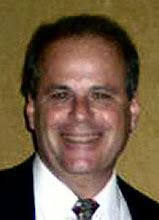
The Museum of Family History is pleased to present to you the story of yet another Jewish actor, now as part of the Museum's exhibition "Stage and Screen: Jews in the Entertainment Industry." You may not know his name, but if you were a fan of the old "Superman" television series with George Reeves as I was, you will recognize him (though the photo of him included here is of a young Ben.)
Ben Welden (aka Ben Weinblatt) was born June 12, 1901 in a small house on 14th Street in Toledo Ohio. He attended Carnegie Tech (now Carnegie Mellon) to become an engineer. He also played violin. Halfway through his degree in engineering, he was talked into taking a part in a school play. He instantly fell in love with acting. After college, he acted on stage in England (their version of Broadway) and became rather famous. When he became famous, he was told to change his name. At that time, one could not use a traditional Jewish name. He changed it from Weinblatt to Welden. Ben even married royalty (an actual duchess), while living in England. After the duchess took one long look at Ben’s family in a poor section of Toledo (OH), she divorced him.
Shortly after his divorce, Ben was asked to come to Hollywood, where some of his friends were creating the American film industry. Ben instantly became a character actor – a gangster. About 235 films, 75 TV shows and 65 years later, Ben retired. He died in 1997, at age 96. Ben has his own Wiki page and a long list of movie credits that would make any actor salivate. He worked with Humphrey Bogart, Betty Davis, Lucille Ball, Jack Benny, James Stewart and many, many famous actors. He appeared on almost every episode of
Superman and he was a staple on
I Love Lucy, Batman, The Three Stooges, Ma & Pa Kettle and too many more to mention here.
To see photos of Ben and to read a tribute to him by his nephew Charles S. Weinblatt, please click
here.
 The United Zembrover Society, the lone remaining landsmanshaft society for the town of Zambrow, Poland, has now put online within the Museum of Family History the next installment of its ongoing Yizkor Book Yiddish/Hebrew to English translation project.
The United Zembrover Society, the lone remaining landsmanshaft society for the town of Zambrow, Poland, has now put online within the Museum of Family History the next installment of its ongoing Yizkor Book Yiddish/Hebrew to English translation project.










